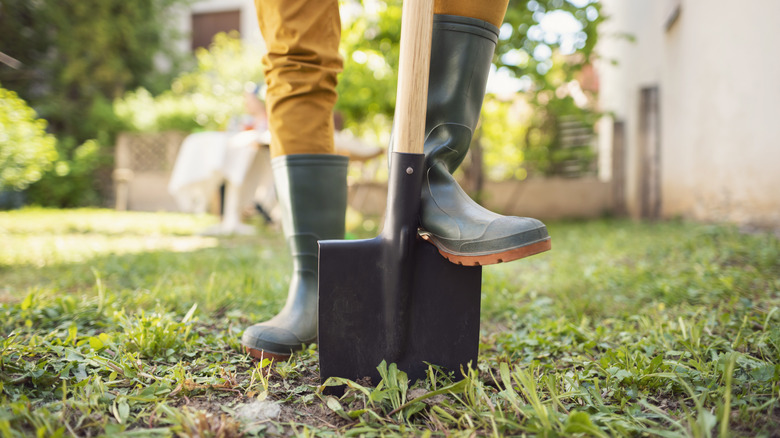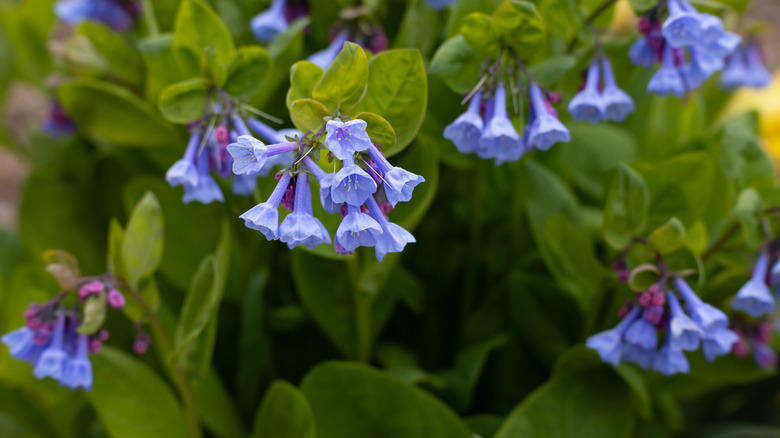Don't Wait - Plant This Garden Flower In October For Stunning Blooms In Spring
If you're on the lookout for a unique addition to your garden, try planting the Virginia bluebell (Mertensia virginica) in October for beautiful flowers next spring. Native to several regions of the U.S., you used to find wild Virginia bluebells in more places than you can now. Officials consider the wildflower to be a threatened plant species in some places since its numbers have fallen due to commercial and residential development.
Virginia bluebells, hardy in USDA Plant Hardiness Zones 3 to 9, were named after Frank Mertens, a botany professor at Bremen in the early 19th century. These dainty perennials are early blue spring flowers, offering up pretty bluish lavender bell-shaped blooms from March until May. The flowers will also bring pollinators like bees, butterflies, and even hummingbirds to the yard. And after they finish blooming, you'll be left with interesting greenery for the rest of the growing season. Not many pests target Virginia bluebells either, including deer.
The best news might be that they don't need a lot of sun to grow. In fact, they're on the list of plants that need shade. Virginia bluebells even prosper in deep shade, which can sometimes mean no direct sunlight at all. That's why when you do find them in the wild, it tends to be in woodlands, beneath the cool and shaded canopy of trees. They can be stars of any shade garden, right alongside hostas, ferns, or twinleaf.
How to plant Virginia bluebells in your October garden
Planting Virginia bluebells in the cooler temperatures of October is good if you want this early spring bloomer to be established in time to flower. They can be propagated from root cuttings, seed, or by rhizomes. You can also divide existing flowers in the fall. Make sure to plant them when the ground still feels soft and hasn't yet frozen, which is a key reason not to plant later than October.
When looking for the perfect spot to plant in, the good news is that they're not picky about soil pH. As long as you choose a well-draining spot, they will tolerate neutral, acidic, or alkaline soils. Given that they're not too fussy about soil pH or sunlight, they could be added to the list of companion plants that live happily under a pine tree. Just make sure to give them plenty of water. They don't like periods of drought or dry soil. A number of other companion plants work well with Virginia bluebells. Try bleeding hearts (Lamprocapnos spectabilis) or wild geraniums (Geranium maculatum).
Unfortunately, it can take a while for Virginia bluebells to flower when grown from seed, sometimes even several years. But once they do get established, they've been known to self-seed and grow together in dense clusters. While dividing mature clusters is a way to propagate them, be careful with trying to move mature plants. Their long taproot can easily be damaged. Finally, it's important to know that they will die back in the summer, but worry not. They're not gone for good. They're just lying dormant and will be back next spring.

